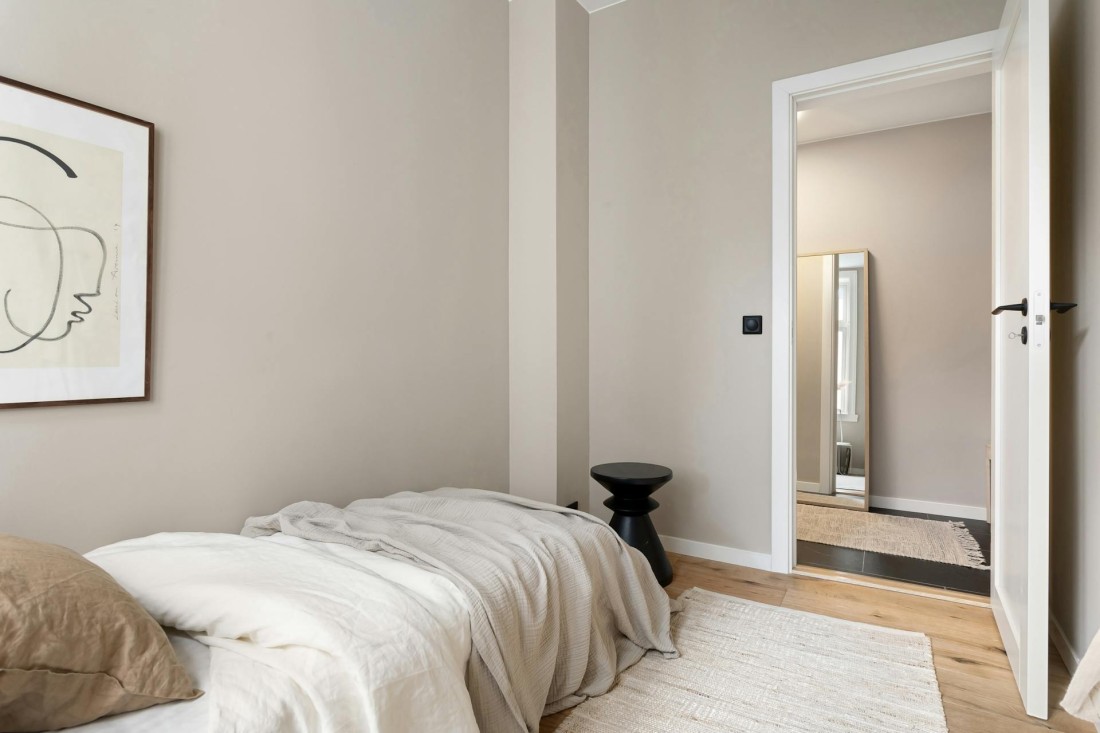Getting the most out of your small room can be incredibly difficult.
Small rooms have a tendency to look very cramped very quickly, but if you don’t incorporate all the furniture you need into the room it effectively becomes unusable and pointless. It is a fine line to tread, but if you design and plan the room properly you can create a space that is both functional and beautiful. To help you create the perfect space and maximise every inch of your room, we have put together some useful tips and ideas.
Plan the layout
The first thing you need to do is consider what you need to add to the room such as furniture, fixtures, fittings and the décor you’d like to include, then plan how it is all going to fit into the room in a way that doesn’t make it look cluttered but instead, maximises the space. When creating the plan you divide the room into zones, or spaces, and give each zone a clearly defined purpose. For example, if the room is a bedroom, it will need an area for sleeping, an area for working, and maybe even an area for relaxing. Choose the right spot for each zone, for example, a sleeping area would be better suited to the darker side of the room, whereas a working area should be in an area of the room that gets the best light.
Choose the right furniture
The furniture you include in the small room will have a big impact on the overall look and feel of the space. This is why it is incredibly important that you choose the right furniture. Too much furniture, or large furniture, will make the room feel cramped and cluttered, so avoid buying things like a large sofa or bed. While it might be tempting to buy a sideboard or surface that can house the television, consider installing the TV to the wall with a hinge that will allow it to be pulled out when the television is in use, and pushed back against the wall out the way when it isn’t being used. While minimalism is key when it comes to furniture, there are some things you can add to the room that will create the illusion of space, for example, mirrors can make a room feel lighter and bigger, because light is reflected around the space.
Adopt a minimalistic approach
When it comes to smaller spaces, less is usually more. Including lots of small pieces of furniture and décor will inevitably make the room feel cluttered, especially if you leave everything on display. For smaller rooms you should consider using plenty of storage solutions and shelving, so that everything has a place to be stored. This also helps you to make use of all the wall space, reducing the amount of floor space you utilise. Although we said you should choose small furniture, sometimes bigger is better, for example, one large L-shaped sofa will most likely look better in a smaller space than two medium sofas. You should also consider clustering objects and décor together rather than spacing everything out, this looks more minimalistic, but it also gives the impression of a cohesive and well-thought out design space.
Consider the space
Here, we don’t mean consider the space in the room and how to use it, we actually mean you should consider the space you leave around the furniture and décor you include in the room. For example, it is tempting, especially in a small space, to push sofas and/or beds against the wall to give yourself a little bit of extra floor space, but actually, leaving a small gap between the furniture and the wall tricks the eye into thinking the wall is further back than it is, making the space appear bigger than it actually is.
Think about the materials
The materials you choose for your furniture also has a big impact on the overall appearance of the room. Thick and bulky wooden furniture will make the room feel more cluttered, whereas a glass topped table will create an airier and more spacious feel. Glass designs look less heavy and they appear to take up less space than solid objects.
Add lighting
The lighting of the room will also have a massive impact on the way it looks. If possible, try to get as much natural lighting into the room as possible. A good way to do this is to use blinds for the windows instead of heavy curtains. You could also consider removing any unnecessary doorways to create a more open space that allows light to move freely around the room. If you don’t have much natural lighting, you should brighten the room with lamps, and spotlights and by using mirrors to reflect the light as much as possible.
A small room doesn’t have to mean a dark and cluttered room that feels uncomfortable to live in, or a room devoid of any furniture and any functionality. Plan properly and use the tips here and you can create a room that looks stunning and is comfortable to live in.
